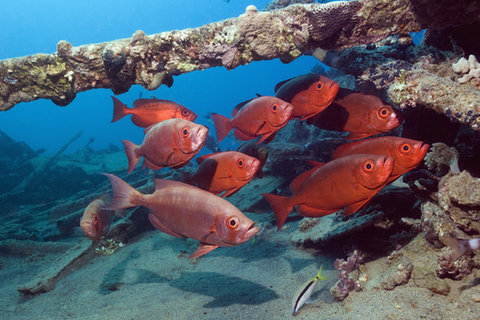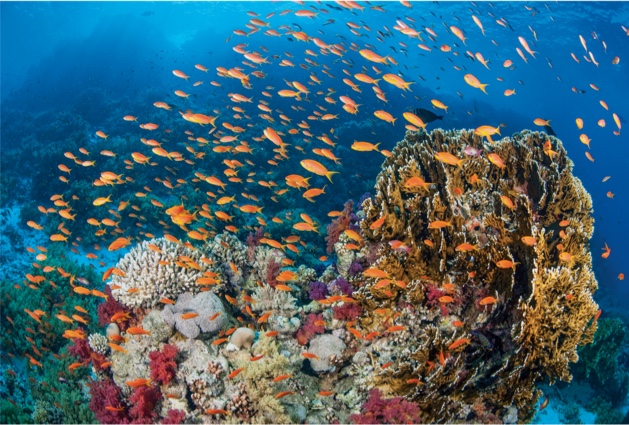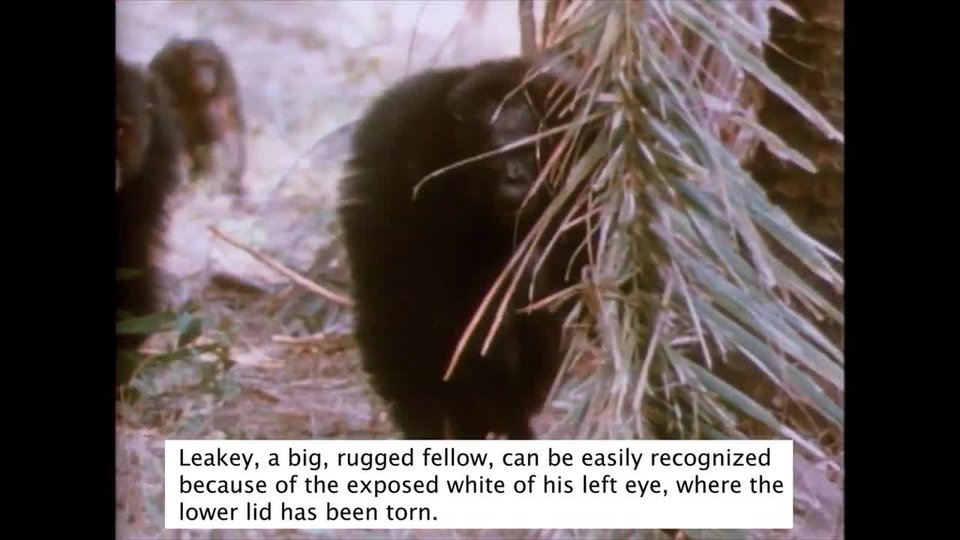It’smiddayoffthecoastofCancún,Mexico.You’reonaboatgettingreadyforareefdive.Youcheckyourgearonelasttime,thentipbackwardofftheboatintotheclear,cool water.
Asyouswimdown,youstarttoseesomething—somethingneartheseabed.Youcontinueyourdescenttonearly10 meters(32feet).Andthere,youcomeface-to-facewith… anotherface.Notanotherdiver,butafacemadeofstone!It ispartofastatue,anditiscoveredinclumpsofalgaeandcrustybitsof coral.
Thisisnottheonlystatueyousee.Therearemanyhere,allcoveredinandsurroundedbysealife.What’sgoingon here?
YoudoveintothemiddleofMUSA,a500‑sculptureunderwatermuseum.Thisplaceisanartificialreef.ItwascreatedtoprotectsomeofMexico’snaturalreefs,whichhavebeendamagedbystorms,boatanchors,and tourism.


Bigeyesliketheselivenearcoral reefs.
TheValueofReefs
Ouroceanscover71percentofEarth’ssurfaceandhold97percentoftheplanet’swater.Nomatterwherewelive,werelyonouroceansfortheairwebreathe.Oceanplantsproducehalfoftheworld’soxygen,andoceanwatersabsorbalmostone-thirdofhuman-causedcarbondioxideemissions.TheoceansalsoregulatetheweatherandplayaroleinEarth’swater cycle.
Coralreefsareoftencalledtherainforestsoftheocean.TheyarethelargestlivingstructuresonEarthandplayakeyroleinkeepingouroceanshealthy.Reefsalsoprotectshorelinesfromstormsurgesandhigh tides.
Reefsprovidefood,shelter,protection,andspawningareasforthousandsofspeciesoffishandothermarineorganisms.Reefsarestudyareasforscientists,suchasthosewhostudyclimatechange.Reefsmayholdthekeytonewtypesofmedicine,too.Compoundstakenfromcoralreefspecieshavealreadybeenusedtotreatmanyinfectionsanddiseases.Andmillionsofpeopleworldwidecountoncoralreefseverydaytoprovidesomefoodorincomefrom fishing.


ThisnaturalreefintheRedSeaisfullofmarine life.
ReefsinTrouble
Unfortunately,increasedhumanpressuresareputtingatremendousstrainonthehealthofouroceansandreefsystems.Threatsincludefishingmethodsthatdamagereefs,carelesstourism,pollution,andclimate change.
HereinCancún,Mexico,thetourismindustrywasbringingmorethan400,000 peopletothenaturalreefseveryyear.Manyofthemwerebeginningdiverswhotypicallycausedmoredamagetothereefsthanexperienced divers.
Thisreefwasdamagedbypeopleblastfishingwith dynamite.
Mexico’sNationalMarineParkcreatedtheunderwatermuseum,MUSA,inanattempttodrawpeopleawayfromnaturalreefsandtowardartificialonesinstead.It’sworking.FortypercentofthepeoplewhowouldhavevisitedthenaturalreefsnowvisitMUSA,including95percentofthebeginners.That’salotlesswearandtearonnaturalreefs.Whennaturalreefsareintrouble,therearethingswecan do!
